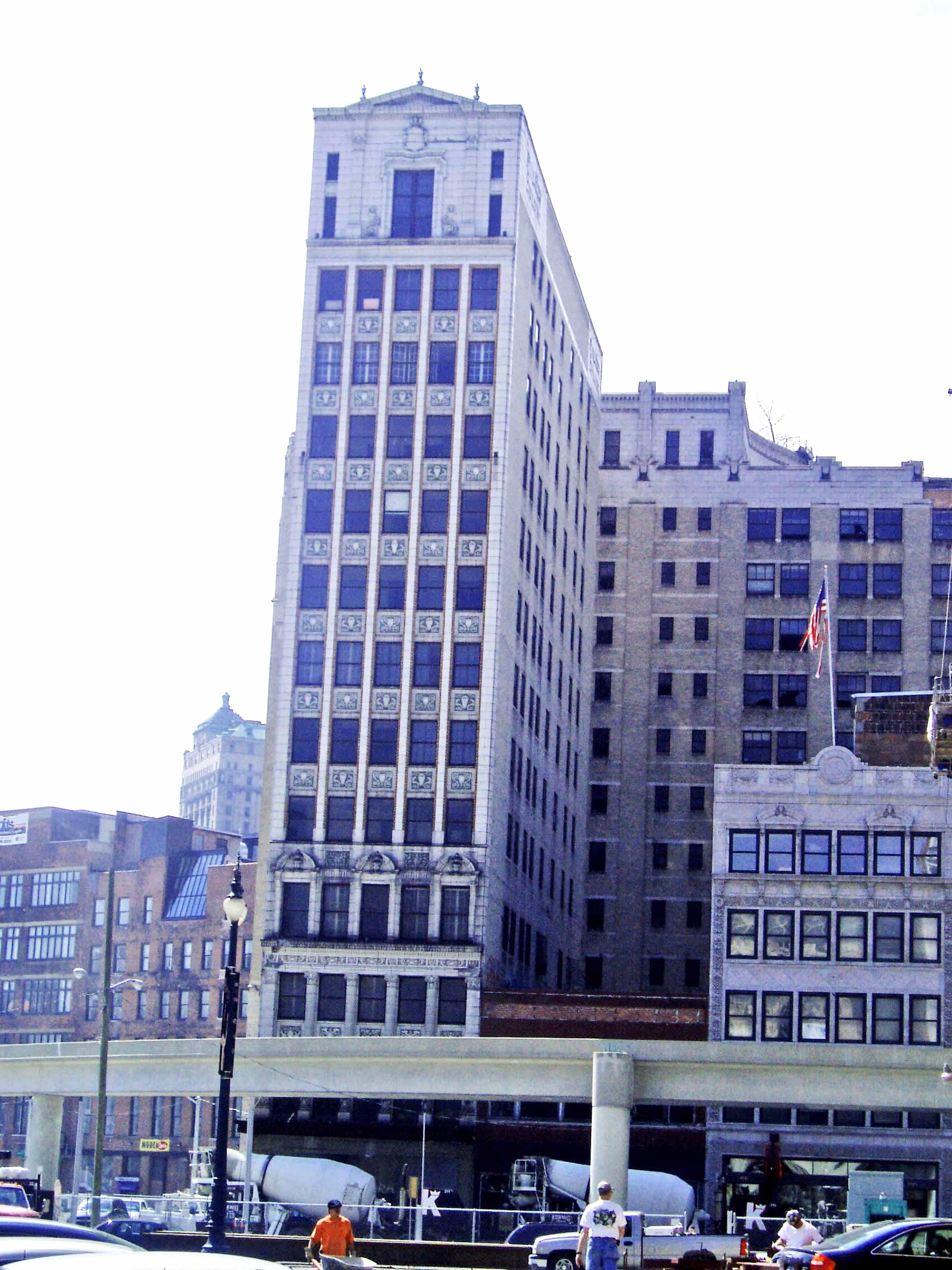

This is one of the most easily identified buildings
on the east side of Woodward in downtown Detroit because of the legible black
and
whites signs at the roofline
with their clear letters. Rudolph Wurlitzer was born in Schoeneck, Saxony in
1829, but migrated to Cincinnati at age 24. He was a component of that large
stream of migrants who migrated away from Germany after the 1848 Revolution. A target destination
for many of those coming to the United States was Cincinnati. By the 1850s,
that booming location probably had the nation’s highest density of German
immigrants and German speakers.
The Wurlitzer family manufactured and sold musical instruments in Saxony for many decades. In 1856, Rudolph Wurlitzer founded the Wurlitzer Company to sell imported instruments, and then opened sales outlets in several large cities. In 1880, Wurlitzer began producing his own pianos in a plant in North Tonawanda, New York that still stands. Shortly after 1900, silent films moved from being an oddity to becoming a major entertainment feature of rapidly growing cities with their increasingly prosperous residents. In Detroit, the Fox, the Palm and what is now the Opera House, were magnificent venues built specifically for the showing of black and white silent films. The most prosperous such theaters installed large organs so that a musician could both entertain customers before the movie and then play appropriate music to accompany action on the screen. The Wurlitzer firm became a dominant supplier of organs to silent picture houses, although they also sold somewhat different but equally massive organs to numerous churches. At least 86 Wurlitzer organs were installed in movie houses, other theaters and churches in the city of Detroit, including those at the Fox Theater, the United Artists Theater, the Fisher Theater and Sts. Peter and Paul Church on East Jefferson. For information about Wurlitzer organs installed in Detroit and other places, please see: www.theaterorgans.com. Wurlitzer built more than 2,000 theater organs between 1911 and the end of production in 1943. The appearance of talking movie pictures in 1927 and the Depression in 1929, truncated the market for Wurlitzer organs.
Homer Capehart manufactured radios and record players in Indiana. In the early 1930s, he invented an electrically operated mechanism that would change records within a machine. Rudolph Wurlitzer’s youngest son recognized the value of this device and purchased the idea from Capehart. This was the start of the Wurlitzer jukebox business. The firm started producing jukeboxes to play 78 rpm records in the mid to late 1930s and, at one point, controlled 60 percent of the prosperous jukebox market. World War II prevented the manufacture of jukeboxes for several years but, in 1946 and 1947, Wurlitzer sold more than 56,000 of the large, colorful jukeboxes that are now valuable collector’s items. Homer Capehart entered Indiana politics and represented that state in the US senate from 1945 through 1963 where he became of a leading voice for post World War II isolationism.
I have limited knowledge of the building pictured above. In the 1920s, the booming Wurlitzer firm built or purchased large buildings in several major cities. I presume that much of the building was used for sales and administration. Nor do I know when the Wurlitzer firm moved away from the building you see. The most recent tenants, apparently, moved out in 1982. The architectural details at the upper levels are quite appealing, but they are rather difficult to see. And the tracts of the People Mover further impede the appreciation of this building’s features.
Also, I am unclear about the corporate history of the Wurlitzer firm. I believe that it became a German firm at some point in the last century and, much more recently, was purchased by the Gibson Musical Instruments conglomerate. Wurlitzer continues to make or market modern jukeboxes, as well as cigarette and soft drink vending machines.
In April 2015, a Brooklyn based real estate development firm proposed a twenty million dollar rehavilitation of the Wurlitzer building. Their plans call for a 100 room botique hotel, a street level cafe and bar, a restaurant on the second floor and a roof level lounge. The Detroit Brownfield Redevelopment Authority approved a $1.89 million in tax increment financing to support this project.
Architect: Robert Finn
Architectural style: Renaissance Revival
Date of Construction: 1926
Additional information: www.historicdetroit.org/building/wurlitzer-building/
City of Detroit Local Historic District: Not listed
State of Michigan Registry of Historic Sites: Not listed
National Registry of Historic Places: Not listed
Photograph: Ren Farley; April 6, 2005
Description updated: April, 2015